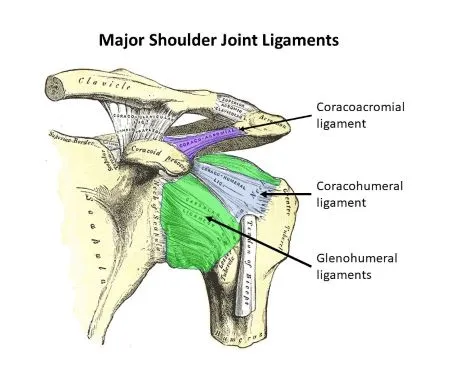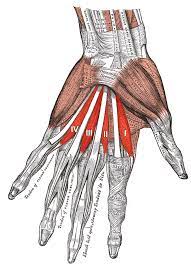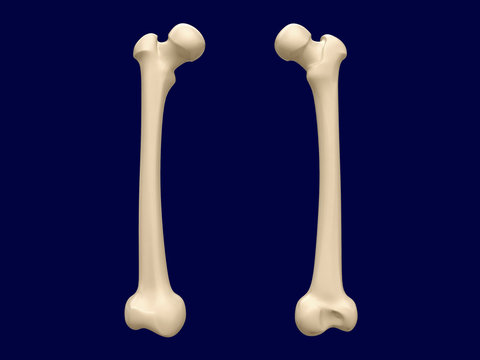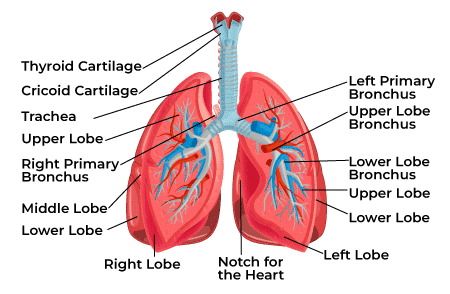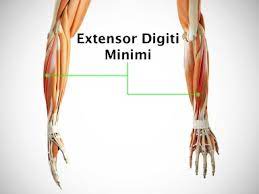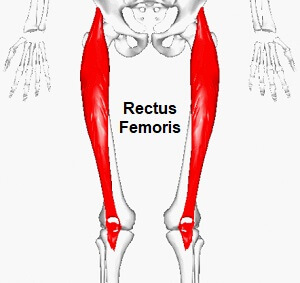Glanohumeral Ligament
Table of Contents
Introduction
The Glenohumeral ligament is a group of three ligaments that attach the humerus bone to the glenoid fossa of the scapula bone in the shoulder joint. These ligaments are named according to their position and include the superior, middle, and inferior glenohumeral ligaments. The glenohumeral ligaments play an essential role in stabilizing the shoulder joint during motion and preventing the risk of dislocation.
They are also responsible for limiting excessive movement of the humerus bone in the joint. Injuries to the glenohumeral ligaments can result in shoulder instability and dislocation, which can be very painful and limit mobility. Rehabilitation exercises, physical therapy, and surgery may be required to treat such injuries.
Structure of the glenohumeral ligament
The glenohumeral ligament is a complex structure that consists of three distinct ligaments: the superior, middle, and inferior glenohumeral ligaments. These ligaments are located in the shoulder joint, which is a ball-and-socket joint that connects the humerus bone (upper arm bone) to the scapula bone (shoulder blade).
The superior glenohumeral ligament is the smallest of the three ligaments and is located at the top of the shoulder joint. It runs from the top of the glenoid fossa (the shallow depression on the scapula that forms the socket for the humerus bone) to the greater tubercle of the humerus (bony prominence on the upper part of the bone). The superior glenohumeral ligament helps to limit excessive upward movement of the humerus bone in the joint.
The middle glenohumeral ligament is located in the center of the shoulder joint and runs from the glenoid fossa to the lesser tubercle of the humerus (a smaller bony prominence on the upper part of the bone). The middle glenohumeral ligament plays a key role in preventing anterior dislocation of the humerus bone (where the bone moves forward out of the socket).
The inferior glenohumeral ligament is the largest and strongest of the three ligaments and is located at the bottom of the shoulder joint. It has three distinct bands: the anterior band, posterior band, and axillary pouch. The anterior band runs from the front of the glenoid fossa to the front of the humerus bone, while the posterior band runs from the back of the glenoid fossa to the back of the humerus bone. The axillary pouch is a small pocket-like structure that sits between the two bands. The inferior glenohumeral ligament helps to prevent posterior dislocation of the humerus bone (where the bone moves backward out of the socket).
So in the end we can say that the glenohumeral ligament is a crucial structure that helps to stabilize the shoulder joint and prevent dislocation. Injuries to the glenohumeral ligament can be very painful and can significantly limit mobility. Treatment for these injuries may include rehabilitation exercises, physical therapy, and surgery.
Functions of the glenohumeral ligament
The glenohumeral ligament is a crucial component of the shoulder joint, and it performs several essential functions. These functions include:
- Stabilizing the Shoulder Joint: The primary function of the glenohumeral ligament is to stabilize the shoulder joint. The ligament acts as a restraining force that limits excessive movement of the humerus in all directions. This is especially important during overhead activities, such as throwing a ball or lifting weights, where the shoulder joint is subjected to significant stress and strain.
- Preventing Dislocation: The glenohumeral ligament plays a critical role in preventing dislocation of the shoulder joint. The ligament attaches the humerus to the glenoid fossa, which is a shallow depression in the scapula or shoulder blade. This connection keeps the humerus securely in place and prevents it from slipping out of the socket.
- Distributing Forces Across the Shoulder Joint: The glenohumeral ligament helps to distribute forces across the shoulder joint. During physical activity, forces are generated that can cause stress and strain on the joint. The ligament helps to spread these forces evenly across the joint, reducing the risk of injury and promoting efficient movement.
- Limiting Excessive Movement: The glenohumeral ligament is divided into three parts, each with a specific role in limiting excessive movement of the humerus. The superior ligament prevents excessive upward movement of the humerus, while the middle ligament limits outward rotation. The inferior ligament is the thickest and strongest of the three, and it prevents downward displacement of the humerus.
In the end, the glenohumeral ligament is very essential for maintaining the stability and function of the shoulder joint. Its functions include stabilizing the joint, preventing dislocation, distributing forces across the joint, and limiting excessive movement of the humerus. Without this ligament, the shoulder joint would be unstable and prone to injury.
Blood supply of the glenohumeral ligament
The glenohumeral ligament is a complex of three ligaments that attach the humerus bone to the glenoid fossa of the scapula bone in the shoulder joint. The blood supply of the glenohumeral ligament is derived from two main sources: the circumflex scapular artery and the suprascapular artery.
The circumflex scapular artery arises from the subscapular artery, which is a branch of the axillary artery. It travels along the lateral border of the scapula and gives off several branches that supply the muscles and soft tissues around the shoulder joint. One of these branches, the ascending branch, supplies the upper part of the glenohumeral ligament.
The suprascapular artery arises from the thyrocervical trunk, which is a branch of the subclavian artery. It travels through the suprascapular notch in the scapula and gives off several branches that supply the muscles and soft tissues around the shoulder joint. One of these branches, the ascending branch, supplies the lower part of the glenohumeral ligament.
In addition to these two main sources, there are also smaller arteries that contribute to the blood supply of the glenohumeral ligament. These include branches from the posterior circumflex humeral artery, which is a branch of the axillary artery, and branches from the anterior humeral circumflex artery, which is a branch of the axillary artery.
So in conclusion, the blood supply of the glenohumeral ligament is rich and extensive, providing sufficient oxygen and nutrients to maintain its structure and function in supporting the shoulder joint.
Symptoms of the glenohumeral ligament
Symptoms of a glenohumeral ligament injury can vary depending on the severity and location of the injury. Some common symptoms include:
- Shoulder Pain: Pain is the most common symptom of a glenohumeral ligament injury. The pain may be sudden or gradual and can range from mild to severe. The pain is usually felt in the front or back of the shoulder and may worsen with movement.
- Swelling: Swelling around the shoulder joint is another common symptom of a glenohumeral ligament injury. The swelling may be mild or severe and may make it difficult to move the arm.
- Stiffness: Stiffness in the shoulder joint is another common symptom of a glenohumeral ligament injury. The stiffness may make it difficult to move the arm and may be accompanied by pain.
- Weakness: Weakness in the shoulder joint is another common symptom of a glenohumeral ligament injury. The weakness may make it difficult to lift objects or perform daily activities.
- Instability: Instability in the shoulder joint is another common symptom of a glenohumeral ligament injury. The instability may cause the shoulder to feel loose or dislocated, which can be very painful.
- Clicking or popping sounds: Clicking or popping sounds in the shoulder joint may also occur with a glenohumeral ligament injury. These sounds may occur with movement and can be accompanied by pain.
If you experience any of these symptoms, it is important to seek medical attention from a healthcare professional who can properly diagnose and treat your injury. Treatment may include rest, physical therapy, medication, or surgery, depending on the severity of the injury.
Injuries of the glenohumeral ligament
There are several activities that can cause glenohumeral ligament injury, including:
- Sports injuries: Contact sports such as football, hockey, and rugby, as well as overhead sports such as tennis, baseball, and volleyball, can put a lot of stress on the shoulder joint and increase the risk of ligament injury.
- Falls: Falling onto an outstretched arm or onto the shoulder can cause the humerus bone to dislocate from the glenoid fossa, resulting in ligament damage.
- Car accidents: The sudden impact of a car accident can cause the shoulder joint to dislocate or subluxate, leading to ligament injury.
- Repetitive strain: Repeated overhead movements, such as those required in painting, construction work, or swimming, can cause wear and tear on the glenohumeral ligament over time, leading to injury.
- Degenerative conditions: Conditions such as osteoarthritis and rheumatoid arthritis can weaken the ligaments in the shoulder joint and increase the risk of injury.
- Improper lifting technique: Lifting heavy objects with poor technique can put excessive strain on the shoulder joint and increase the risk of ligament injury.
It is very important to take medical treatment if you feel any symptoms of a glenohumeral ligament injury, such as shoulder pain, weakness, instability, or a visible deformity in the joint. Treatment options may involve rest, medication, surgery, or physical therapy depending on the severity of the injury.
Treatment of the glenohumeral ligament
Examination test
The sulcus test
The sulcus test is a physical examination technique used to assess the integrity of the glenohumeral ligament, which is the ligament that connects the humerus bone to the glenoid fossa of the scapula in the shoulder joint. The test is performed by applying downward traction on the arm while the patient is in a seated position with their arm relaxed at their side.
To perform the sulcus test, the examiner grasps the patient’s elbow with one hand and the wrist with the other hand. The examiner then applies a downward force on the arm to create a gap between the humeral head and the glenoid fossa. This gap creates a visible depression or sulcus on the skin overlying the lateral aspect of the shoulder joint.
The examiner observes the depth and width of the sulcus, as well as any pain or discomfort reported by the patient during the test. A deeper and wider sulcus indicates greater laxity or instability of the glenohumeral joint, which may be indicative of a tear or injury to the glenohumeral ligament.
The sulcus test is often used in conjunction with other physical examination techniques, such as the apprehension test and relocation test, to assess shoulder instability and determine the appropriate course of treatment.
The anterior drawer test
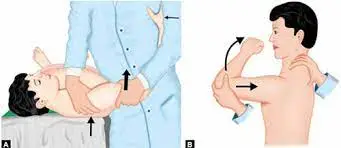
The anterior drawer test is a special test used to assess for anterior glenohumeral ligament laxity. It is commonly performed in patients who have experienced shoulder dislocations or have symptoms of instability in the shoulder joint.
During the test, the patient is positioned in a sitting or supine position with their arm relaxed at their side. The examiner stands in front of the patient and stabilizes the scapula with one hand while grasping the patient’s elbow with the other hand. The examiner then applies a forward force to the humeral head while assessing for any excessive movement or “drawer” motion.
If there is increased anterior translation of the humeral head compared to the contralateral side, it may indicate damage to the anterior glenohumeral ligament. This can lead to instability and an increased risk of shoulder dislocation.
The anterior drawer test is often performed in conjunction with other special tests to assess for different types of glenohumeral ligament injuries. Treatment options may include physical therapy, bracing, or surgical intervention depending on the severity and type of injury.
The posterior drawer test
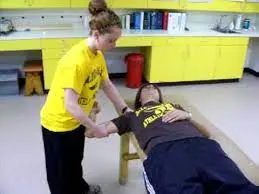
The posterior drawer test is a special test used to assess for posterior glenohumeral ligament laxity. It is commonly performed in patients who have experienced trauma to the shoulder or have symptoms of instability in the shoulder joint.
During the test, the patient is positioned in a sitting or supine position with their arm relaxed at their side. The examiner stands behind the patient and stabilizes the scapula with one hand while grasping the patient’s elbow with the other hand. The examiner then applies a backward force to the humeral head while assessing for any excessive movement or “drawer” motion.
If there is increased posterior translation of the humeral head compared to the contralateral side, it may indicate damage to the posterior glenohumeral ligament. This can lead to instability and an increased risk of shoulder dislocation.
The posterior drawer test is often performed in conjunction with other special tests to assess for different types of glenohumeral ligament injuries. Treatment options may include physical therapy, bracing, or surgical intervention depending on the severity and type of injury.
It is important to note that the posterior drawer test should only be performed by a trained healthcare professional who is familiar with the technique and interpretation of results.
Conservative treatment
The glenohumeral ligament is a ligament that connects the humerus bone to the glenoid fossa of the scapula in the shoulder joint. Injury to this ligament can result in shoulder instability and pain. Conservative treatment options for glenohumeral ligament injuries may include:
Rest and immobilization: Resting the affected shoulder and avoiding activities that aggravate the injury can help reduce inflammation and promote healing. Immobilization with a sling or brace may also be necessary to prevent further injury.
Physical therapy: Physical therapy can help improve range of motion, strength, and stability in the shoulder joint. Exercises may include stretching, strengthening, and proprioception training to improve balance and coordination.
Non-steroidal anti-inflammatory drugs (NSAIDs): Over-the-counter NSAIDs such as ibuprofen or naproxen can help reduce pain and inflammation associated with glenohumeral ligament injuries.
Corticosteroid injections: Injections of corticosteroids directly into the shoulder joint can help reduce inflammation and pain.
Platelet-rich plasma (PRP) therapy: PRP therapy involves injecting platelet-rich plasma, which is derived from the patient’s own blood, into the affected area to promote healing.
It is very important to take in mind that conservative treatment options may not be effective for all cases of glenohumeral ligament injuries. In some conditions, surgical intervention may be necessary to repair or reconstruct the damaged ligament. It is very crucial to consult with a medical professional to identify the best course of treatment for individual cases.
Physiotherapy treatment
Physiotherapy treatment for glenohumeral ligament injuries typically involves a combination of exercises and manual therapy techniques. The primary goals of physiotherapy are to reduce pain and inflammation, improve range of motion and strength, and restore stability to the shoulder joint.
Assessment: The first step in physiotherapy treatment for a glenohumeral ligament injury is a thorough assessment of the shoulder joint. This may include a physical examination, imaging tests such as X-rays or MRI, and a detailed history of the injury.
Rest and immobilization: Resting the affected shoulder and immobilizing it with a sling or brace may be necessary to prevent further injury and allow the ligament to heal.
Manual therapy: Manual therapy techniques such as massage, joint mobilization, and soft tissue mobilization can help reduce pain and stiffness in the shoulder joint.

Range of motion exercises: Range of motion exercises are designed in order to improve flexibility and mobility in the shoulder joint. These exercises may include stretching, pendulum exercises, and passive range of motion exercises.
Strengthening exercises: Strengthening exercises are designed to improve the strength and stability of the shoulder joint. These exercises may include resistance band exercises, weightlifting, and isometric exercises.
Proprioception training: Proprioception training is designed to improve balance and coordination in the shoulder joint. This may involve exercises such as standing on one leg or the use of a wobble board.
Functional training: Functional training involves exercises that mimic daily activities and sports-specific movements to help patients return to their normal activities.
Education: Patients may also receive education on proper posture, body mechanics, and techniques for preventing future injuries.
So in the end, physiotherapy treatment for glenohumeral ligament injuries is tailored to the individual needs of each patient. A physiotherapist will work closely with the patient to develop a personalized treatment plan that addresses their specific symptoms and goals.
Risk factors of the glenohumeral ligament
The glenohumeral ligament is a group of ligaments that connect the humerus bone to the scapula bone in the shoulder joint. These ligaments provide stability to the joint and help to prevent dislocation and other injuries. However, there are several risk factors that can increase the likelihood of developing a glenohumeral ligament injury. These include:
- Trauma: Trauma to the shoulder joint, such as a fall or sports injury, can cause damage to the glenohumeral ligament.
- Repetitive overhead movements: Activities that involve repetitive overhead movements, such as throwing a ball or swimming, can put a strain on the glenohumeral ligament over time.
- Poor posture: Poor posture can cause imbalances in the muscles around the shoulder joint, which can increase the risk of developing a glenohumeral ligament injury.
- Weakness or tightness in muscles: Weakness or tightness in the muscles around the shoulder joint can also increase the risk of injury to the glenohumeral ligament.
- Aging: As we age, the ligaments and other tissues in the shoulder joint may become weaker and more prone to injury.
- Genetics: Some individuals may be genetically predisposed to developing glenohumeral ligament injuries.
- Previous injuries: Individuals who have previously injured their shoulder joint may be at a higher risk of developing a glenohumeral ligament injury in the future.
Overall, it is very essential to take steps to reduce these risk factors in order to prevent injury to the glenohumeral ligament and maintain optimal shoulder joint health. This may include practicing good posture, incorporating stretching and strengthening exercises into your routine, and avoiding activities that put excessive strain on the shoulder joint.
How to prevent injuries of the glenohumeral ligament
Preventing injuries to the glenohumeral ligament is important for maintaining optimal shoulder joint health and avoiding pain and discomfort. Here are some steps you can take to prevent injuries to the glenohumeral ligament:
- Practice good posture: Maintaining good posture can help to prevent imbalances in the muscles around the shoulder joint, which can reduce the risk of injury to the glenohumeral ligament. While sitting or standing, maintain your shoulders back and down, and always avoid slouching.
- Incorporate stretching and strengthening exercises: Stretching and strengthening exercises can help to improve flexibility and strength in the muscles around the shoulder joint, which can reduce the risk of injury to the glenohumeral ligament. Some exercises that can be helpful include shoulder rolls, shoulder stretches, and rotator cuff strengthening exercises.
- Avoid repetitive overhead movements: Activities that involve repetitive overhead movements, such as throwing a ball or swimming, can put a strain on the glenohumeral ligament over time. If you participate in these activities, be sure to take breaks and stretch regularly to reduce the risk of injury.
- Use proper technique: When participating in sports or other activities that involve the shoulder joint, be sure to use proper technique to reduce the risk of injury. For example, when throwing a ball, use proper form and avoid overexerting yourself.
- Maintain a healthy weight: Excess weight can put additional strain on the shoulder joint, increasing the risk of injury to the glenohumeral ligament. Maintaining a healthy weight can help in reducing this risk.
- Avoid previous injuries: If you have previously injured your shoulder joint, be sure to take steps to prevent future injuries. This may include avoiding activities that put excessive strain on the shoulder joint or using protective equipment when participating in sports or other activities.
Overall, taking steps to prevent injuries to the glenohumeral ligament can help to maintain optimal shoulder joint health and reduce the risk of pain and discomfort. If you experience any pain or discomfort in the shoulder joint, be sure to seek medical attention to prevent further injury.
FAQ
The glenohumeral ligament is a group of ligaments that attach the humerus bone to the glenoid fossa of the scapula in the shoulder joint.
The glenohumeral ligament helps to stabilize the shoulder joint and prevent excessive movement of the humerus bone.
Injury to the glenohumeral ligament can be caused by trauma, overuse, or repetitive strain. It can also be caused by dislocation or subluxation of the shoulder joint.
Symptoms of a glenohumeral ligament injury may include pain, swelling, stiffness, weakness, and instability in the shoulder joint.
A glenohumeral ligament injury can be properly diagnosed with a physical examination, imaging tests such as X-rays or MRI, and possibly an arthroscopy.
Treatment for a glenohumeral ligament injury may include rest, ice, physical therapy, anti-inflammatory medication, and in severe cases, surgery.

